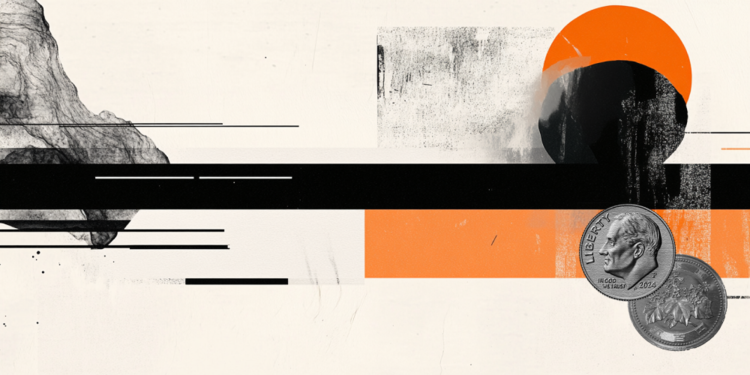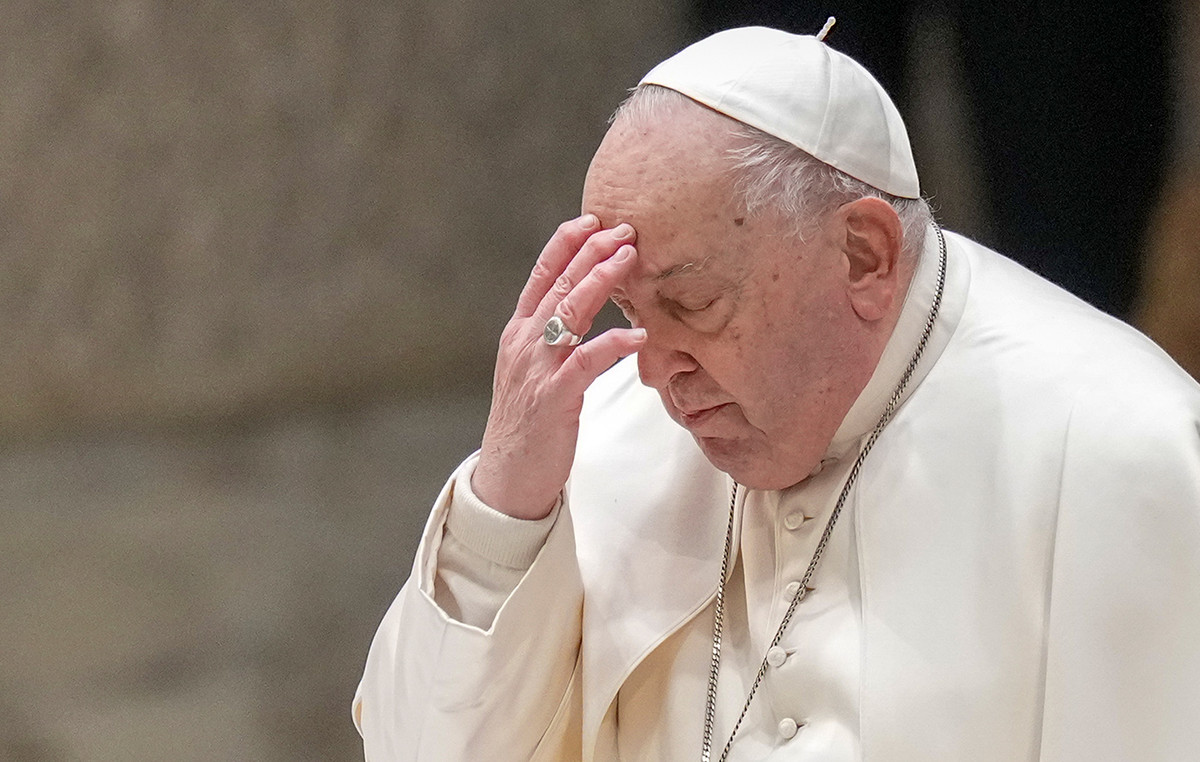The Pope’s death marks the beginning of a process of millennial tradition simplified in some traits from the will of Pope Francis, but which maintains fundamental passages. From the assessment of the Pope’s death to the conclave that elects his successor passing through the burial. Usually they go from 3 days up between death and the funeral, immediately after this the burial arrives.
The news wanted by Francesco
At the behest of Pope Francis, they were new rules introduced by the office of liturgical celebrations of the Supreme Pontiffthe Vatican Department that manages the papal religious rites. The goal is to make ceremonies more essential and less elaborate, in tune with the sober approach that the Pontiff has adopted since the beginning of his ministry.
The changes introduced concern four main aspects: the language used, the three key moments of the funeral ceremony, the revision of texts and music of the prayers, and the masses following the Pope’s death.
As for the titles with which reference is made to the pontiff during the funeral, it was decided to adopt a more direct and accessible language. Solemn expressions such as “Supreme Pontiff of the Universal Church” or “Sovereign of the State of the Vatican City” will leave room for more essential terms As “Pope” “Pastor” or “Pontifex Romanus”, to give a less institutional and more spiritual vision of the papal role.
Papal funerals are traditionally articulated in three main phases, called “stations”: the observation of death, the exposure of the body and the burial. The observation of death will no longer take place in the Pope’s private chamber, but directly in his personal chapel. The Pope’s body will be placed in one coffincomposed of wood and zinc, and will be exposed to the faithful inside this, open on the upper part. It comes like this Abandoned the custom of exposing the body without coffin, lying on a raised door. We therefore give up on the passage in three different coffins of different materials, as happened in the past.
The texts of the prayers have also been updated. Some were shortened and translated more accurately by Latin, with the elimination of rigid indications that left little room for creativity. As for the music, the new rules allow greater freedom in the choice of the repertoire. Also The masses celebrated in the days following the Pope’s death were made more slender. In particular, The form of the prayers to be used have been reduced: The available options go from four to three, facilitating the organization of the liturgical rites.
All these news are collected in the new edition of theOrdo Exsequiarum Romani Pontificisisthe manual governing the papal funeral ceremonies. The latest revision dates back to 2000, during the pontificate of John Paul II, and was applied to both his funeral in 2005, and to those of Benedict XVI in 2023.
Assessment of death
Must be the chamberlain to officially ascertain the death of the Pope. The Camerlengo is the cardinal who presides over and administers the Holy See during the holiday period, waiting for the succession. The Camerlengo always affixes the seals to the pope’s rooms.
The ritual says that he has to beat the Pope’s forehead three times, calling him with the name of Baptism, then communicating the death to the Cardinal Vicar of Rome who, after carrying out the extreme anointing, with a special notification proceeds to spread the news.
As soon as the death of a Pope in office is found, the shattering of the piscatorial ring is shattered, he teaches that the Pope receives during the solemn mass of the pontificate beginning and that he wears the ring finger of the right hand.
According to the new rules wanted by Bergohlio, the first station “In the house of the deceased” provides for the novelties of the observation of death in his private chapel, instead of in the room, and the deposition of the body in the only wooden coffin and in the internal zinc that, before being translated into the Basilica. The first translation in the Apostolic Palace has been eliminated.
It is not he who announces the news of the Pope’s death to the world. The vicar of Rome does it. Following a door of the Basilica of San Pietro and the bells played in a hammer.
Exposure
The Pope’s body is transported to the Sistine chapel. Here traditionally the dressing with the pontifical vestments takes place: the pallium, white wool strip with black crosses, woven for the occasion, white mitria on the head and casula, that is, the red cloak that is used for mass.
For three days the pontiff’s body is exposed to the faithful. The Pope wears the pontifical vestments: white mitria, red casula, white wool pallium with black crosses.
In the Vatican Basilica, the body of the deceased Pope is exposed directly to the coffin and “no longer on a high cataletto”, moreover, in accordance with what establishes the Cæremoniale episcoporum For the funeral of the diocesan bishop, the papal pastoral pastoral will not be placed alongside the coffin.
Since the deposition in the coffin has already occurred after the observation of death, the evening before the funeral mass, its closure was carried out. The second station “In the Vatican Basilica” considers a single translation in San Pietro, the closure of the coffin and the funeral mass.
Funeral
The funeral service traditionally takes place at the Pontifical altar of Bernini, located under the dome of the Basilica. In reality, the funeral of John Paul II and Benedict XVI were made outdoors. The coffin will already be in the basilica, closed from the previous evening with a veil of silk place on the face of the pontiff. Pope Ratzinger asked for simple funeral and Bergoglio will go on the same line.
Texts
The new edition of theOrdo Exsequiarum Romani Pontificisis It has been subjected to an in -depth revision regarding the column, Eukological and Biblical texts. It was necessary in particular to uniform the Latin prayers to the third typical edition of the Missale Romanum of 2008 and the biblical translation of the Nova Vulgata, while the Italian translation was aligned with the third edition of the Roman Missal of 2020 and of Lectione of the CEI in force since 2008.
The litanies of the saints were updated, sung during the rites of the funeral on two occasions: while the Pope’s body is translated into the Basilica, in the longest form, and during the traditional plea of the church of Rome, at the end of the funeral mass, for which the short form was chosen. They were included of all the saints celebrated with the degree of festival or compulsory memory, indicated in the general calendar, and completed with the insertion of all the saints of the Popes present in the general calendar with the degree of optional memory and some saints of the church of Rome.
Burial
The new rules foresee The possibility of burials in places other than San Pietro’s Basilica. Pope Francis expressed the desire to be buried in the Basilica of Santa Maria Maggiore, close to the Termini station in Rome, instead of the Vatican.
Novedial
The novedials are the masses in suffrage of the deceased Pope celebrated for nine consecutive days starting from the funeral mass. The new ritual shows four and no more three form of prayers of your choice, as all those offered by the Missale Romanum for the deceased Pope and that for the deceased diocesan bishop have been resumed. Unlike the previous edition, the texts of the ledger are omitted, of which only the biblical indications are offered. Finally, this new edition does not present the full -bodied appendix with the ordinary of the mass, the collections of penitential and gradual psalms and the songs of the ordinary with the Gregorian notation.
Conclave
The Conclave is the meeting of the Cardinal Vlectors who have the task of electing the new Pope and usually takes place about fifteen days after the death of the previous pontiff. Before the beginning of the Conclave, in the Basilica of San Pietro, the Pros Eligando Romano Pontifice is celebrated. All the Cardinal Vlectors participate and formally start the rites of the Conclave.
The cardinals then proceed in procession from the Paolina chapel to the Sistine Chapel. Each cardinal wears the red guise, the spool that is the white above, the mozzetta, that is, the short cape that covers the shoulders, and the cap, a cubic hat with three rigid fins and bow on the upper part.
In the Sistine chapel, controlled and reclaimed in the previous days, all voting operations related to the conclave are carried out. The benches are mounted to host the Cardinal Vlectors and the stove to burn the sheets after each vote.
The Cardinal Decano pronounces the oath in Latin and then the cardinals swear on the Gospels: they must faithfully carry out the assignment in the interest of the church and maintain the secret on what Sistine will take place.
The master of the liturgical celebrations of the Supreme Pontiff, after the oath, pronounces the extra omnes phrase, all out. Only the Cardinal Vlectors remain, those with an age equal to or over 80 years cannot vote. The new Pope must obtain two thirds of the votes of those present. Two votes are made a day. Three cards are given to each cardinal, three tellers, three auditors and three in charge of collecting the votes of the sick cardinals are chosen. Each card has the writing Eligo in Summum Pontifficem: here you write the name of your candidate. When everyone has inserted the sheet into the urn by placing it on a plate, the tellers count the cards and, if the number is correct, read the names. If there is no element, another vote is immediately made. All voting documents are burned in the stove.
If the smoke that comes out of the chimney is white means that its new pontiff has been elected, a black smoke means the opposite. Every day there are two smokes: one at the end of the morning around 12 and the other at 7pm. On the ninth day, after at least 33 ballots without a positive outcome, the conclave makes a ballot between the two cardinals who received the most votes. The times depend on the cardinal agreement, but the period of the year also counts. It took two days for the election of Pope Francis close to Easter and with Ratzinger’s resignation arrived for a month.
The elected Pope is asked if he accepts the canonical election to Supreme Pontiff. He is asked to choose a name to his positive response. He then wears the white vestments in the Sistine sacristy and returns for the final te deum. Only after this arrives the Habemus Papam, the announcement from the loggia of the Basilica of San Pietro by the Cardinal Protodiacono of the name of the new pontiff.
Source: Vanity Fair
I’m Susan Karen, a professional writer and editor at World Stock Market. I specialize in Entertainment news, writing stories that keep readers informed on all the latest developments in the industry. With over five years of experience in creating engaging content and copywriting for various media outlets, I have grown to become an invaluable asset to any team.






